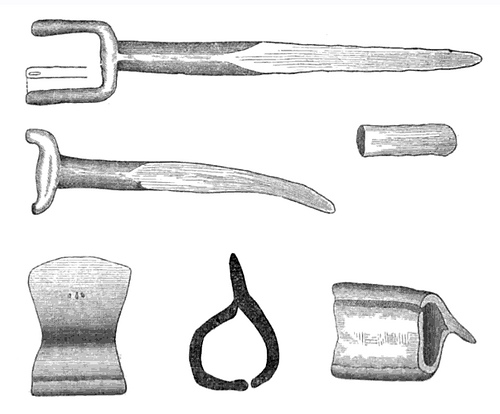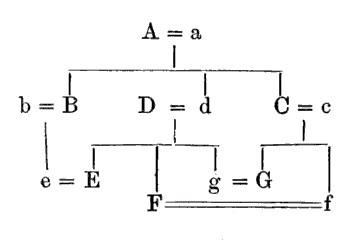
Clearing out a prehistoric mica mine in Macon County, N.C., in 1880, investigators discovered a curious collection of iron tools.
The inference to be drawn from the discovery of these iron relics, is, that some of the ‘old diggings’ are the work of Europeans, as the use of iron was unknown to the native American races. Is it not possible that there is a basis of truth in the old Cherokee tradition? That a party of Spanish explorers — and perhaps more than one — penetrated Western Carolina in search of gold, silver and other minerals, and, in some instances, finding the old mines of the Mound-builders, caused preliminary investigations of their value, does not seem improbable.
“To what expedition these Europeans belonged is a mystery. That of De Soto, according to the course traced out by Bancroft, passed within a comparatively short distance of North Carolina … From it an exploring party was sent to the north, which returned disheartened, without the precious gold, reporting the mountains impassable. Could the work have been done by stragglers from this or other parties, or have there been special expeditions to this region of which the historian has lost sight?”
(Frederic W. Simonds, “The Discovery of Iron Implements in an Ancient Mine in North Carolina,” American Naturalist, January 1881)




